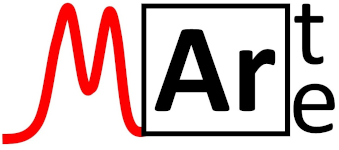
Teléfono: +34 876 553 503
Email: garciae@unizar.es
Dirección: c/Pedro Cerbuna 12, Universidad de Zaragoza, Facultad de Ciencias, Departamento de Química Analítica – Zaragoza (España)
SOBRE MÍ
PUBLICACIONES
2013
Resano, M.; Flórez, M. R.; García-Ruiz, E.
High-resolution continuum source atomic absorption spectrometry for the simultaneous or sequential monitoring of multiple lines. A critical review of current possibilities Artículo de revista
En: Spectrochimica Acta Part B: Atomic Spectroscopy, vol. 88, pp. 85-97, 2013, ISSN: 0584-8547.
@article{RESANO201385,
title = {High-resolution continuum source atomic absorption spectrometry for the simultaneous or sequential monitoring of multiple lines. A critical review of current possibilities},
author = {M. Resano and M. R. Flórez and E. García-Ruiz},
url = {https://www.sciencedirect.com/science/article/pii/S0584854713001596},
doi = {https://doi.org/10.1016/j.sab.2013.06.004},
issn = {0584-8547},
year = {2013},
date = {2013-01-01},
journal = {Spectrochimica Acta Part B: Atomic Spectroscopy},
volume = {88},
pages = {85-97},
abstract = {This work examines the capabilities and limitations of commercially available high-resolution continuum source atomic absorption spectrometry instrumentation for multi-line monitoring, discussing in detail the possible strategies to develop multi-element methodologies that are truly simultaneous, or else sequential, but from the same sample aliquot. Moreover, the simultaneous monitoring of various atomic or molecular lines may bring other important analytical advantages, such as: i) expansion of the linear range by monitoring multiplets; ii) improvements in the limit of detection and in precision by summing the signals from different lines of the same element or molecule; iii) simple correction for matrix-effects by selecting a suitable internal standard; or iv) accurate mathematical correction of spectral overlaps by simultaneous monitoring of free lines of the interfering molecule or element. This work discusses how authors have made use of these strategies to develop analytical methodologies that permit the straightforward analysis of complex samples.},
keywords = {},
pubstate = {published},
tppubtype = {article}
}
2012
Resano, M.; Mozas, E.; Crespo, C.; Pérez, J.; García-Ruiz, E.; Belarra, M. A.
Direct analysis of silica by means of solid sampling graphite furnace atomic absorption spectrometry Artículo de revista
En: Spectrochimica Acta Part B: Atomic Spectroscopy, vol. 71-72, pp. 24-30, 2012, ISSN: 0584-8547, (COLLOQUIUM SPECTROSCOPICUM INTERNATIONALE XXXVII (CSI XXXVII)).
@article{RESANO201224,
title = {Direct analysis of silica by means of solid sampling graphite furnace atomic absorption spectrometry},
author = {M. Resano and E. Mozas and C. Crespo and J. Pérez and E. García-Ruiz and M. A. Belarra},
url = {https://www.sciencedirect.com/science/article/pii/S0584854712000572},
doi = {https://doi.org/10.1016/j.sab.2012.03.005},
issn = {0584-8547},
year = {2012},
date = {2012-01-01},
urldate = {2012-01-01},
journal = {Spectrochimica Acta Part B: Atomic Spectroscopy},
volume = {71-72},
pages = {24-30},
abstract = {This paper reports on the use of solid sampling-graphite furnace atomic absorption spectrometry for the direct analysis of synthetic amorphous silica. In particular, determination of hazardous elements such As, Cd, Cr, Cu, Pb and Sb is investigated, as required by regulations of the food industry. The conclusion of the work is that, after proper optimization of the working conditions, paying particular attention to the atomization temperature and the use of proper modifiers (graphite powder, HNO3 or Pd), it is possible to develop suitable procedures that rely on the use of aqueous standard solutions to construct the calibration curves for all the elements investigated. The proposed method shows important benefits for the cost-effective analysis of such difficult samples in routine labs, permitting fast screening of those elements that are very rarely present in this type of sample, but also accurate quantification of those often found, while offering low limits of detection (always below 0.1mgg−1) that comply well with legal requirements, and precision levels that are fit for the purpose (approx. 6–9% R.S.D.).},
note = {COLLOQUIUM SPECTROSCOPICUM INTERNATIONALE XXXVII (CSI XXXVII)},
keywords = {},
pubstate = {published},
tppubtype = {article}
}

